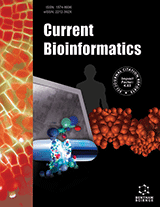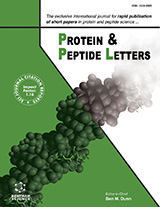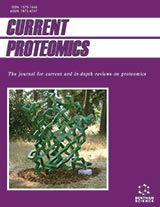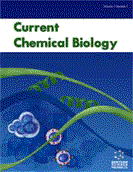Abstract
The rapidly growing structure databases enhance the probability of finding identical sequences sharing structural similarity. Structure prediction methods are being used extensively to abridge the gap between known protein sequences and the solved structures which is essential to understand its specific biochemical and cellular functions. In this work, we plan to study the ambiguity between sequence-structure relationships and examine if sequentially identical peptide fragments adopt similar three-dimensional structures. Fragments of varying lengths (five to ten residues) were used to observe the behavior of sequence and its three-dimensional structures. The STAMP program was used to superpose the three-dimensional structures and the two parameters (Sequence Structure Similarity Score (Sc) and Root Mean Square Deviation value) were employed to classify them into three categories: similar, intermediate and dissimilar structures. Furthermore, the same approach was carried out on all the three-dimensional protein structures solved in the two organisms, Mycobacterium tuberculosis and Plasmodium falciparum to validate our results.
Keywords: Identical peptides, non-redundant structures, protein data bank, protein fragments, structural similarity, Plasmodium falciparum, Mycobacterium tuberculosis, fragments, organisms, parameters
Current Bioinformatics
Title:Sequence-Structure Similarity: Do Sequentially Identical Peptide Fragments have Similar Three-Dimensional Structures?
Volume: 7 Issue: 2
Author(s): Muthukumarasamy Uthayakumar, Sanjeev Patra, Raju Nagarajan and Kanagaraj Sekar
Affiliation:
Keywords: Identical peptides, non-redundant structures, protein data bank, protein fragments, structural similarity, Plasmodium falciparum, Mycobacterium tuberculosis, fragments, organisms, parameters
Abstract: The rapidly growing structure databases enhance the probability of finding identical sequences sharing structural similarity. Structure prediction methods are being used extensively to abridge the gap between known protein sequences and the solved structures which is essential to understand its specific biochemical and cellular functions. In this work, we plan to study the ambiguity between sequence-structure relationships and examine if sequentially identical peptide fragments adopt similar three-dimensional structures. Fragments of varying lengths (five to ten residues) were used to observe the behavior of sequence and its three-dimensional structures. The STAMP program was used to superpose the three-dimensional structures and the two parameters (Sequence Structure Similarity Score (Sc) and Root Mean Square Deviation value) were employed to classify them into three categories: similar, intermediate and dissimilar structures. Furthermore, the same approach was carried out on all the three-dimensional protein structures solved in the two organisms, Mycobacterium tuberculosis and Plasmodium falciparum to validate our results.
Export Options
About this article
Cite this article as:
Uthayakumar Muthukumarasamy, Patra Sanjeev, Nagarajan Raju and Sekar Kanagaraj, Sequence-Structure Similarity: Do Sequentially Identical Peptide Fragments have Similar Three-Dimensional Structures?, Current Bioinformatics 2012; 7 (2) . https://dx.doi.org/10.2174/157489312800604345
| DOI https://dx.doi.org/10.2174/157489312800604345 |
Print ISSN 1574-8936 |
| Publisher Name Bentham Science Publisher |
Online ISSN 2212-392X |
 8
8
- Author Guidelines
- Bentham Author Support Services (BASS)
- Graphical Abstracts
- Fabricating and Stating False Information
- Research Misconduct
- Post Publication Discussions and Corrections
- Publishing Ethics and Rectitude
- Increase Visibility of Your Article
- Archiving Policies
- Peer Review Workflow
- Order Your Article Before Print
- Promote Your Article
- Manuscript Transfer Facility
- Editorial Policies
- Allegations from Whistleblowers
Related Articles
-
Virtual Screening Against M. tuberculosis 7,8-Diaminopelargonic Acid Synthase (MtbBioA) and In Silico Toxicity Evaluation of Top Hits
Current Enzyme Inhibition A New Catalytic Method for Eco-Friendly Synthesis of Quinoxalines by Zirconium (IV) Oxide Chloride Octahydrate Under Mild Conditions
Letters in Organic Chemistry Therapeutic Potential of Natural Products from Terrestrial Plants as TNF-α Antagonist
Current Topics in Medicinal Chemistry Using Metabolomics for Elucidating the Mechanisms Related to Tuberculosis Treatment Failure
Current Metabolomics Network-Based Strategies Can Help Mono- and Poly-pharmacology Drug Discovery: A Systems Biology View
Current Pharmaceutical Design Editorial: Recent Advances in the Field of Kinases and Kinase Inhibitors
Current Pharmaceutical Design Structure and Function of RNase AS: A Novel Virulence Factor From Mycobacterium tuberculosis
Current Medicinal Chemistry QSAR and Docking Studies on Propenone Derivatives as Dual COX and 5- LOX Inhibitors
Letters in Organic Chemistry Th1-mediated Pathology in Mouse Models of Human Disease is Ameliorated by Concurrent Th2 Responses to Parasite Antigens
Current Topics in Medicinal Chemistry Nitric Oxide Production and Signaling in Inflammation
Current Drug Targets - Inflammation & Allergy Potential MicroRNA Targets for Cancer Chemotherapy
Current Medicinal Chemistry 1, 4-Dihydropyridines: A Class of Pharmacologically Important Molecules
Mini-Reviews in Medicinal Chemistry Lipid-Specific Immune Responses Against Tuberculosis: From Basic Science to Medical Applications
Current Immunology Reviews (Discontinued) Malaria and Leishmaniasis: Current Status of Chemotherapy, New Leads and Targets for Drug Discovery
Anti-Infective Agents in Medicinal Chemistry Acetohydroxyacid Synthase: A Target for Antimicrobial Drug Discovery
Current Pharmaceutical Design Nanobiotechnology: An Efficient Approach to Drug Delivery of Unstable Biomolecules
Current Protein & Peptide Science Modeling Anti-Allergic Natural Compounds by Molecular Topology
Combinatorial Chemistry & High Throughput Screening Nitazoxanide Analogues as Antimicrobial Agents Against Nosocomial Pathogens
Medicinal Chemistry Modern Drug Discovery Technologies: Opportunities and Challenges in Lead Discovery
Combinatorial Chemistry & High Throughput Screening Foreword (“New Targets and New Drugs: from in silico Planning to in vivo Testing”)
Current Pharmaceutical Biotechnology

















.jpeg)








